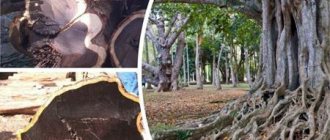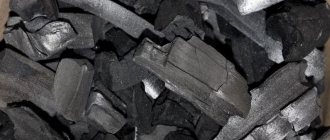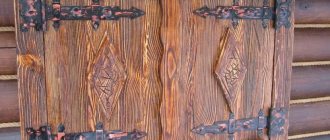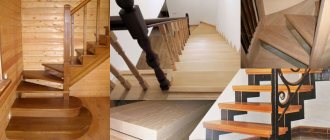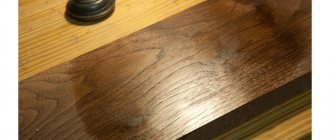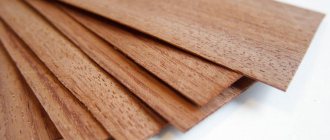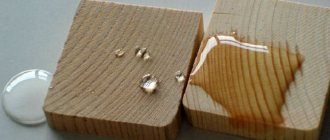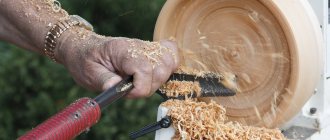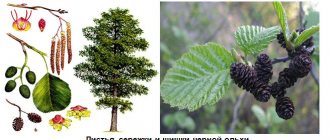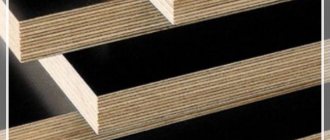Craftsmen who deal with wood are always looking for a material of particular strength and value from which they can create special products. One of the most expensive is ebony, the varieties of which are endowed with certain distinctive features.
What is ebony?
A plant native to the tropics and belonging to the Persimmon genus. Native to Africa, the islands of the Indian Ocean and some territories of India and Asia. Those who are looking for information about what ebony is should know its peculiarity - its natural black color. In addition to wood, its fruits are also popular; due to their unusual taste, they are used in various cuisines around the world. Other names for the plant include music tree, ebony tree and mpingo. Already in ancient times, people considered it magical and used the bark and leaves for various rituals.
Ebony - characteristics
The wood obtained from the core of the trunk can be colored from black to dark green. In addition, ebony is endowed with the following properties:
- Hardness. Working with wood places increased demands on the strength and sharpening of the tool.
- The density is more than 1.3 t/m³, which causes ebony to sink in water.
- Indicators of bonding ability are at a high level.
- The texture of ebony is so uniform that even upon close inspection it is impossible to see the annual rings or fibers.
- Strength and resistance to stress helps to withstand high impact loads, but the wood bends easily under the influence of hot steam.
- Ebony wood has immunity to diseases and fungi, as well as resistance to weather conditions.
- Hygroscopicity is low due to the high density and fullness of the vessels.
Wood is so unique that it does not need much decoration. A fine polishing is enough to give it an attractive look. In addition, ebony has the following underestimated indicators:
- degree of shrinkage;
- oxidation coefficient;
- expressiveness of texture;
- stability.
A little history
Since today the main story is about wood, the conversation will be about the history of the use of this particular material, and not edible fruits. The blackwood tree has had many names. The Africans called him "Mugembe" and "Mpingo". The names “musical tree” and “zebra tree” were also heard. Ancient tribes used bark, leaves, and wood in their farming. They were inclined to deify nature, and ebony in Africa was also endowed with supernatural properties. It was believed that if you fenced your home with a palisade made of ebony wood, then evil spirits would not be able to enter it. Valuable wood was used to make amulets and ritual weapons. Craftsmen made ebony boxes in which they stored ritual objects so that the gods would not turn away from them and would retain their magical qualities.
Ebony products were found by archaeologists during excavations of Egyptian tombs. But later research showed that this is not a tree of the ebony family, but an African pink Dalbergia from the Legume family.
Persia highly valued the properties of ebony wood. This is evidenced by the fact that Persia accepted tribute from the Ethiopians in ivory, gold and ebony bars.
Peter I brought the fashion for black wood products to Russia. At that time, black ebony was widely used for making trinkets, home decoration and furniture. This emphasized status and position in society. In addition, the presence of expensive furniture made of valuable wood spoke of wealth and good taste.
Types of ebony wood
Unlike other species, ebony is sold not by cubic meters, but by kilograms. The cost of 1 kg ranges from $100-150. The following types are especially popular:
- Cameroonian
. Height 3-4 m. Ripening age is about 550 liters. The core is black without gloss, sometimes endowed with ash-gray veins. Due to the fact that the veins are visible, the cost of wood is lower than that of other types. - Ceylonese
. A classic version of ebony, the description of which indicates a uniform dark shade of the core without any pores or stripes. It feels like stone, and after polishing it acquires a noble glow. The most valuable material for crafts. - Indonesian
. The second name is Makassar. A distinctive feature is the colored stripes (maroon or gold) on a black background. The densest wood. - Madagascar
. The shade is coal black with a metallic sheen on the cuts. The density of ebony is average, the core is finely porous. Unlike others, it is resistant to water and termites. - Lunar
. A unique variety that can only be found in the Philippines. Plum-colored wood with thin stripes of dark color that are woven into an intricate pattern. One of the rarest breeds.
▍ Amaranth, purple heart, purple heart
The legume family
grows in the tropical forests of Central and South America.
Density of samples 918 and 957.
Immediately after cutting, the color is gray-brown, but when exposed to air it soon turns deep purple. Under the influence of ultraviolet light it darkens and becomes brown with a slight purple tint. In guitar making it is used on necks, fingerboards, tops and decorations. Examples: Keith Roscoe and Harley-Benton guitars.
Sounds like a typical acacia tree.
Ebony - processing
Sawing and cutting wood is a labor-intensive process that requires the use of tools of high strength and sharpness. The texture of ebony wood is practically not saturated with liquids, but the surface is well polished, acquiring a mirror shine. Treatment with an antiseptic or coloring compound is not necessary. Drying the wood takes a long time. A couple of years before cutting down, circular notches are applied, which stop the growth process. After the felling, drying is carried out in the shade without drafts. After hot steaming, many types of ebony bend well.
Applications of ebony
Due to its high price, this type of wood has never been widely consumed. In ancient times, it was valued on a par with gold. Ebony furniture has been valued since the times of the Egyptian pharaohs. The most sought-after properties are the ability to obtain a perfectly smooth surface after polishing. This result is not possible with any other type of wood. Ebony visually resembles metal, which is complemented by a noticeable coldness upon contact with its surface.
Description and characteristics
Ebony (photos are posted in the article) is a diffusely vascular sound hardwood with white narrow sapwood (a layer of wood directly adjacent to the bark). It has a core with invisible annual layers of black color with a glossy surface. Its heart-shaped rays are very narrow, so they cannot be seen in any of the sections. Small vessels, collected in radial groups, are most often filled with core substances, colored black.
The density of dried ebony wood can vary from 1000 to 1300 kg/m³. The sapwood is quite narrow and contrasts sharply with the dark color of the heartwood. However, Caucasian persimmon, as well as several other types of trees, have one significant difference. It lies in the fact that their sapwood and mature wood are exactly the same in color.
Ebony wood products
The use of unique wood is aimed at producing:
- furniture;
- parquet;
- chess pieces and boards;
- ebony wood is a unique material for souvenirs;
- billiard cues and balls;
- various decorations;
- smoking pipes and cigarette cases;
- musical instruments;
- cutlery and knitting needles.
Ebony wood table
All furniture was made by hand. Considering the high cost of the material, ebony is used only in the visible parts of the product. When deciding what color to choose, remember that ebony is dark and will go well with light wood. Currently, furniture is not produced, because ebony is under protection, and the places where it grows are considered nature reserves. Modern furniture makers use ebony veneer as a good alternative to solid wood. Bright options include:
- A simple office desk with a beautiful pattern on the surface.
- A small round coffee table.
- Eating items with a thick tabletop and legs.
- A rectangular table visually similar to stone.
Ebony figurine
Such products are very popular among collectors all over the world. Knowing the characteristics of the material, many people want to have a miniature product in their collection. Ebony wood has an original color and high strength, so the figurines will delight you with their beauty for a long time. It is important to remember that in African culture, each figurine has its own meaning:
- The image of an elephant is a symbol of wisdom.
- The warrior will protect his owner from the energy attacks of others.
- The image of a giraffe is a symbol of grace, greatness and beauty.
- A female figurine is given to an unmarried girl with wishes for a successful marriage.
- The image of a lion is a symbol of nobility, harmony and dignity.
Ebony pipe
Connoisseurs of quality tobacco cannot imagine their life without a smoking pipe. The properties of ebony to retain heat and at the same time remain durable were useful to the manufacturers of this device. Products are easily processed, while obtaining an ideal front surface. Vivid examples of such products made from ebony include the following options:
- Products made entirely of ebony with a smooth surface.
- The original shape of the chibouk, reminiscent of a flower bud with a mouthpiece made of a different material.
- Chubuk, resembling a dark brown shoe with a completely black mouthpiece.
Ebony cross
Ebony is credited with mystical qualities of rejuvenation and healing. They say that master carvers not only do not get sick, but are also long-livers, maintaining efficiency and clarity of mind until their last days. In myths, ebony was credited with magical properties; it is believed that an evil spirit cannot be near the owner of any thing made of this material. Based on this, various products began to be made from ebony. Rings and crosses are especially popular. They give their owner strength and, very importantly, health.
Some notable examples include the following:
- A simple product with a carved figure on the surface.
- Option with added silver.
- Wooden product with a silver figurine.
- Carved cross with inscriptions.
A little history
Since today the main story is about wood, the conversation will be about the history of the use of this particular material, and not edible fruits. The blackwood tree has had many names. The Africans called him "Mugembe" and "Mpingo". The names “musical tree” and “zebra tree” were also heard. Ancient tribes used bark, leaves, and wood in their farming. They were inclined to deify nature, and ebony in Africa was also endowed with supernatural properties. It was believed that if you fenced your home with a palisade made of ebony wood, then evil spirits would not be able to enter it. Valuable wood was used to make amulets and ritual weapons. Craftsmen made ebony boxes in which they stored ritual objects so that the gods would not turn away from them and would retain their magical qualities.
Ebony products were found by archaeologists during excavations of Egyptian tombs. But later research showed that this is not a tree of the ebony family, but an African pink Dalbergia from the Legume family.
Persia highly valued the properties of ebony wood. This is evidenced by the fact that Persia accepted tribute from the Ethiopians in ivory, gold and ebony bars.
Peter I brought the fashion for black wood products to Russia. At that time, black ebony was widely used for making trinkets, home decoration and furniture. This emphasized status and position in society. In addition, the presence of expensive furniture made of valuable wood spoke of wealth and good taste.
Ebony wood - interesting facts
The following interesting facts are known about this representative of the fauna:
- Significant density is the result of slow growth.
- A tree, unlike others, sinks in water.
- Thanks to essential oils, it is not susceptible to the negative influence of the external environment.
- Ebony parquet is expensive (about $400 per square meter);
- Ebony wood is twice as hard as oak.
- Wood dust causes an allergic reaction in the body.
- Stop the growth of the tree by cutting in a circle.
- Most varieties are listed in the Red Book.
